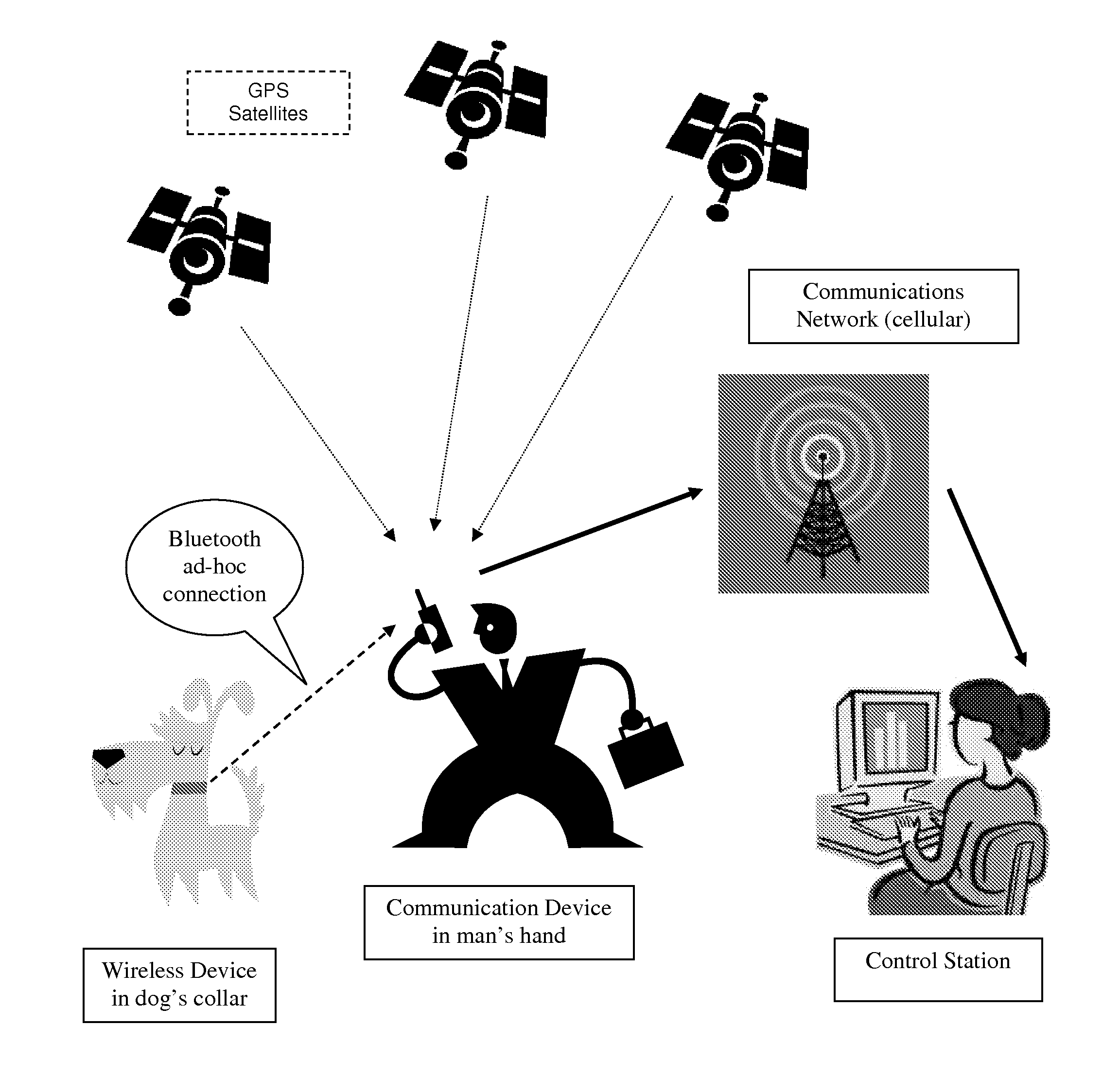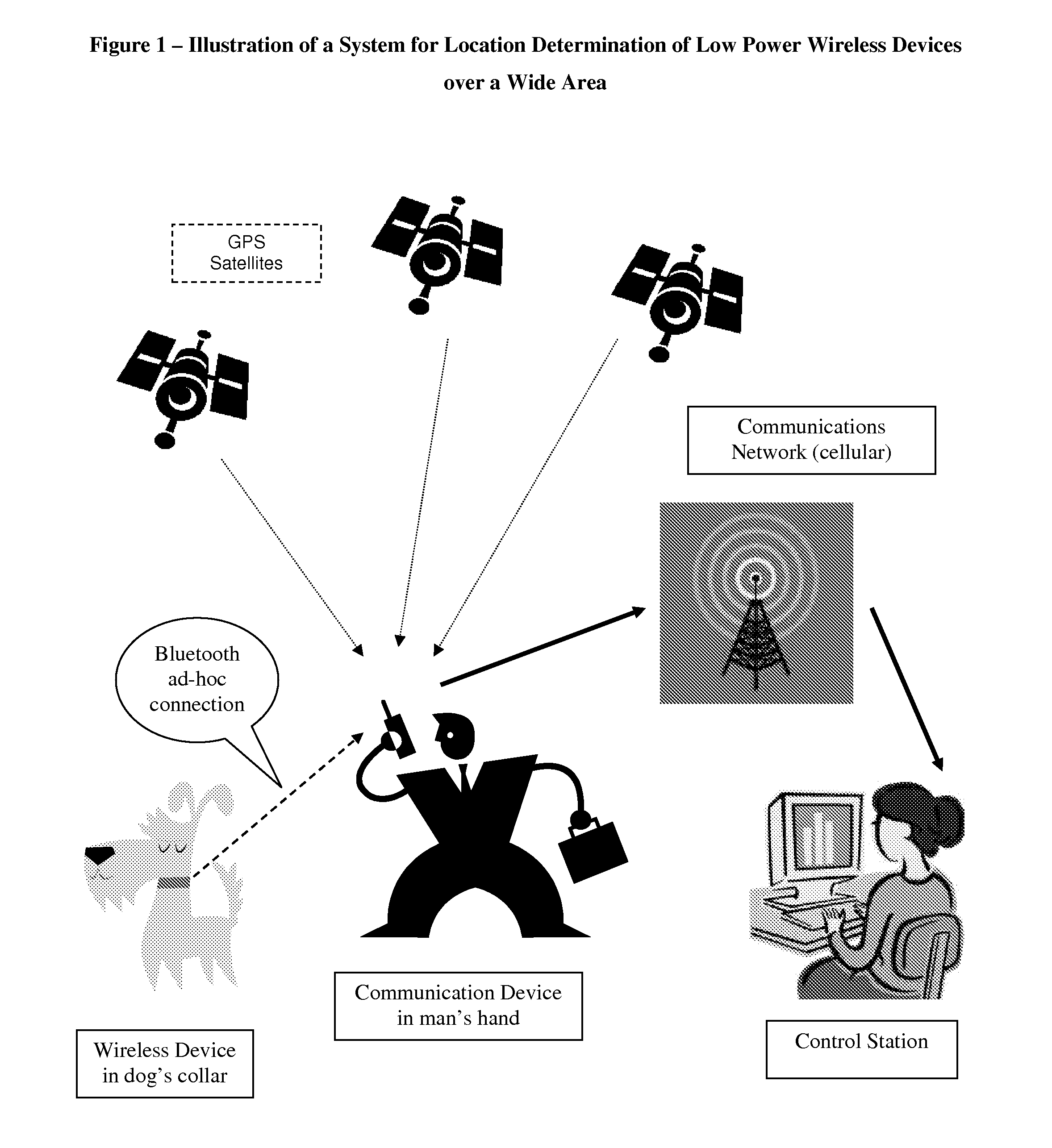Location determination of low power wireless devices over a wide area
a low-power wireless and wide-area technology, applied in power management, frequency-division multiplex, instruments, etc., to achieve the effect of small sensor, low cost, and low power
- Summary
- Abstract
- Description
- Claims
- Application Information
AI Technical Summary
Benefits of technology
Problems solved by technology
Method used
Image
Examples
Embodiment Construction
[0065]The invention will now be described with respect to various embodiments. The following description provides specific details for a thorough understanding of, and enabling description for, these embodiments of the invention. However, one skilled in the art will understand that the invention may be practiced without these details. In other instances, well-known structures and functions have not been shown or described in detail to avoid unnecessarily obscuring the description of the embodiments of the invention.
[0066]The invention is directed to a system and method for location determination of wireless devices, over a wide area, comprised of: a) a plurality of wireless devices, each wireless device comprised of a first short range transmitter and a sensor; b) a plurality of communication devices, each communication device comprised of a second receiver and a third transceiver; c) a communications network; d) a control station coupled to said network; wherein said sensor configu...
PUM
 Login to View More
Login to View More Abstract
Description
Claims
Application Information
 Login to View More
Login to View More - R&D
- Intellectual Property
- Life Sciences
- Materials
- Tech Scout
- Unparalleled Data Quality
- Higher Quality Content
- 60% Fewer Hallucinations
Browse by: Latest US Patents, China's latest patents, Technical Efficacy Thesaurus, Application Domain, Technology Topic, Popular Technical Reports.
© 2025 PatSnap. All rights reserved.Legal|Privacy policy|Modern Slavery Act Transparency Statement|Sitemap|About US| Contact US: help@patsnap.com



